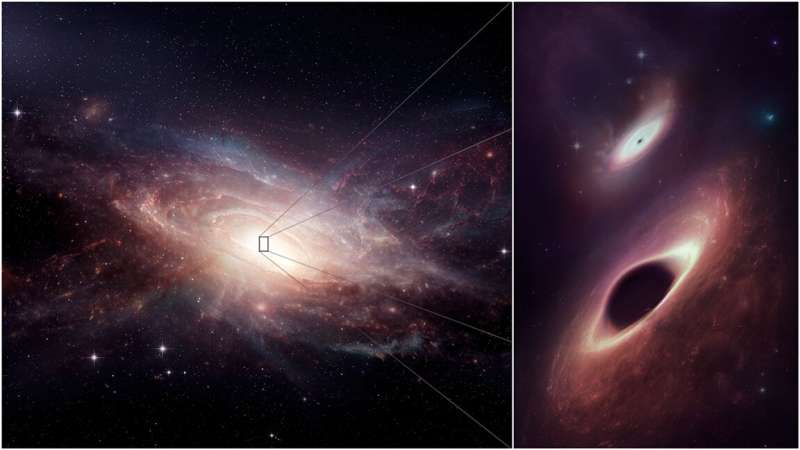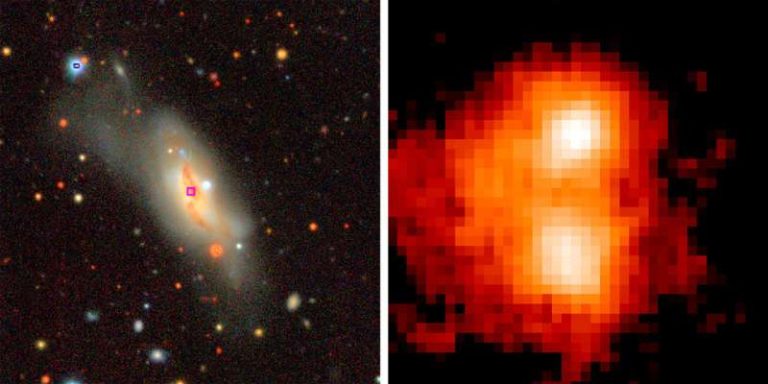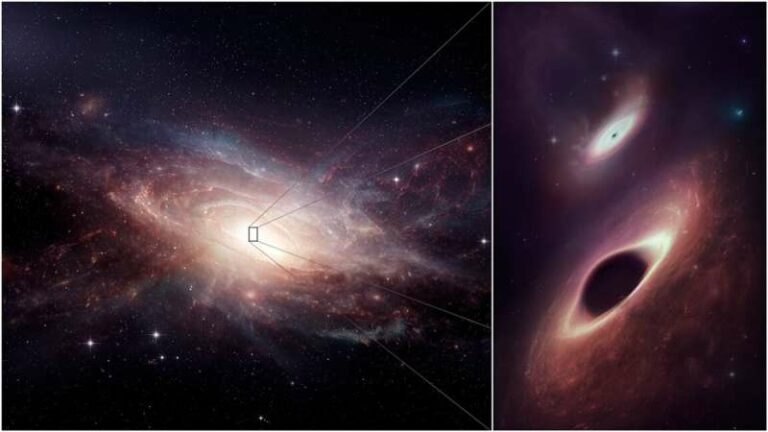The nearest encounter of an ill-fated duo of supermassive black holes ever observed.
During an American Astronomical Society meeting in Seattle and in a paper published in The Astrophysical Journal Letters, astronomers announced on January 9th that they have observed two massive black holes moving towards each other for a cataclysmic collision.
The newly discovered pair of supermassive black holes are the closest to merging ever seen, despite being 750 light-years apart in cosmological terms. However, the actual merger is not expected to occur for several hundred million years. This discovery will help scientists to better estimate the number of supermassive black holes that are also approaching collision in the universe.

By detecting the gravitational-wave background produced by these collisions, scientists can improve their understanding of the history of galaxy mergers in the universe. Co-author of the study, Chiara Mingarelli, describes the short distance between the black holes as being “fairly close to the limit of what we can detect, which is why this is so exciting.”
Combining observations from seven telescopes, including NASA’s Hubble Space Telescope, astronomers were able to differentiate between the two supermassive black holes, despite their small separation. While supermassive black holes are not directly visible through optical telescopes, they are surrounded by bright clusters of luminous stars and warm gas that are pulled in by their gravitational force. The quick discovery of the newly identified black holes suggests that they may be more common than previously thought.
These supermassive black holes are located within a merger of two galaxies approximately 480 million light-years from Earth. Typically residing at the center of galaxies, black holes grow in size as they absorb gas, dust, stars, and other black holes. The two black holes identified in this study are extremely massive, with masses of 200 million and 125 million times that of the sun.
As the host galaxies collided, the black holes began to meet and will eventually orbit each other, with their orbit tightening as stars and gas pass between them, stealing their orbital energy. Ultimately, the black holes will produce much stronger gravitational waves than any previously detected before merging to form a single massive black hole.
Previous observations of the merging galaxies had only revealed a single supermassive black hole, due to the proximity of the two objects. However, by combining 12 observations made by seven telescopes, the team of astronomers led by Michael J. Koss of Eureka Scientific in Oakland, California, were able to conclusively reveal the existence of two distinct black holes.

Mingarelli emphasizes the importance of the consistency in the multi-observation research, stating that it is crucial to verify that all images tell the same story, which in this case, confirms the existence of two supermassive black holes. This is a significant improvement over previous studies of close-proximity black holes, where follow-up observations often revealed only one black hole.
With multiple observations in agreement, the researchers were able to estimate that the population of merging supermassive black holes in the universe may be higher than previously thought, generating a significant amount of gravitational waves. The researchers predict that the resulting gravitational-wave background will be easier to detect due to the abundance of black-hole pairs. Mingarelli expects the first detection of the gravitational-wave background to occur soon.
Do not forget to share your opinion with us to provide you with the best posts !




0 Comments